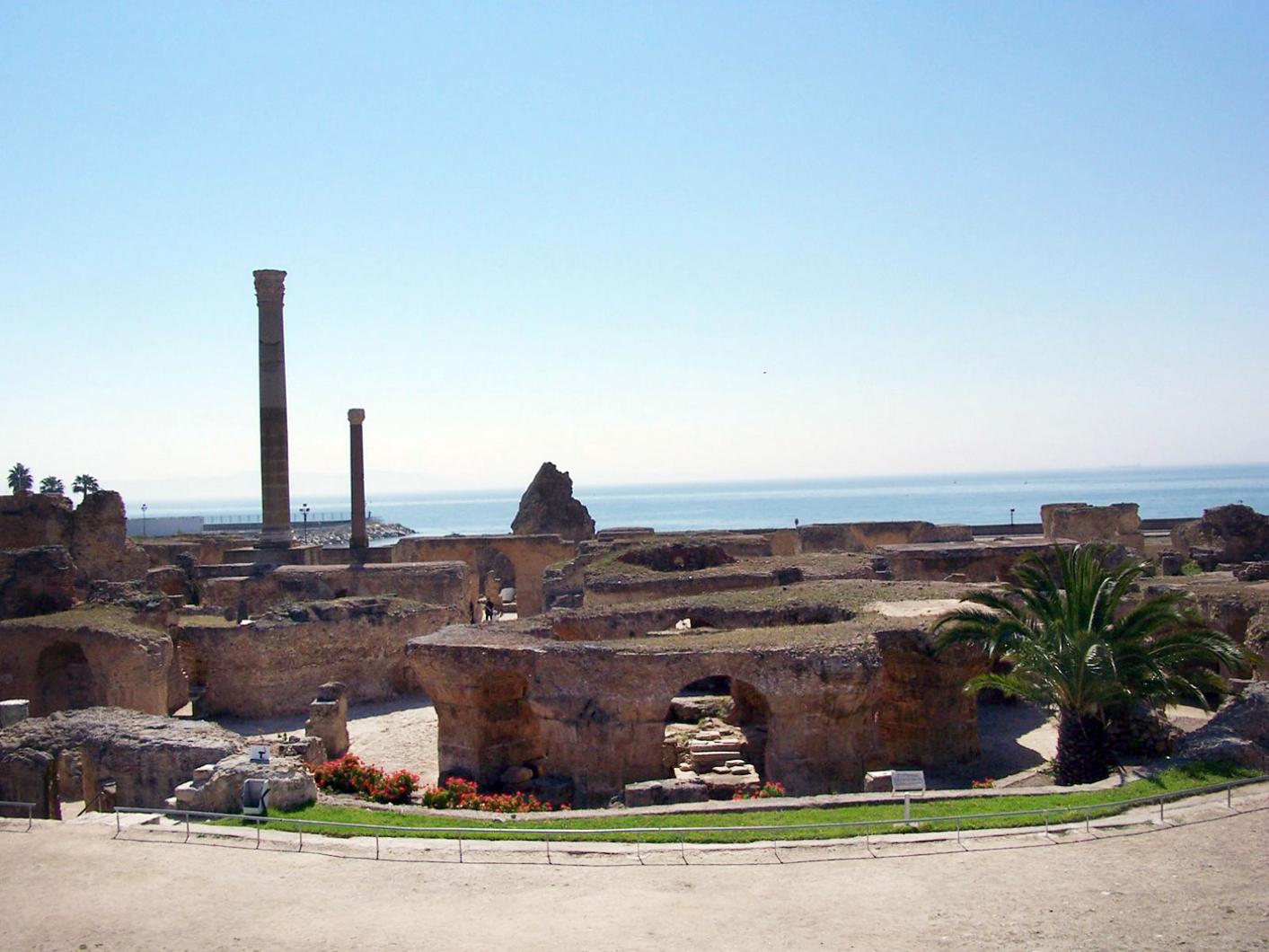I am just back from Tunisia. Sadly, I have not been to a hammam — the Turkish steam bath for which Tunisia is famous. And I have not ridden a camel, which, of course, one should always do in a desert country. But I have seen camels aplenty and I have petted one (coarse, uninviting hair — not at all like the smooth texture of a camel’s hair coat). The camel, however, was friendly. His name was Ali Baba and he even let me scratch his ears. Admittedly, he was muzzled. That seems to be the trend among camel owners these days, probably because cross camels spit. Years ago I rode on a camel in Egypt and she (or he) was not muzzled, but in those days there were fewer tourists visiting Africa and they were a hardier, less fussy sort, I suspect.
When I asked about going to a hammam — where one goes from room to room and the rooms get hotter and hotter and steamier and steamier, I was told I would need at least two free hours at a time of day when hammams are open to women. My steam bath, I learned, could have included a massage with abrasive gloves. I was not sure that sounded especially soothing and I have always thought massages were meant to be soothing. Apparently, though, hammam massages are to clean off dead skin rather than to put one to sleep. But, as it turned out, there were never two free hours to spend in a hammam on my stay. So I must return to Tunisia, I guess, both to ride on a camel and to have a steam bath under a domed roof.
I did, however, learn and see all sorts of remarkable things. I visited he ruins of Carthage, the city founded by the seafaring Phoenicians in 814 B.C. Carthage was destroyed by the Romans and then rebuilt by them and made into the largest city after Rome in their empire. Sadly, it was destroyed once more by Arab invaders. Archeologists have managed to excavate large portions of it, however.
I vaguely remembered from Virgil’s Aeneid that the city’s founder, the sensational Queen Dido, had had a star-crossed love affair with the Trojan Aeneas. He had fled to Carthage after Greek warriors, hidden inside the wooden Trojan horse, had destroyed his home city. When he reached Carthage, Dido was smitten with him, but the gods made him move on and she set herself on fire as he sailed away.
I had not remembered, however, that St. Augustine — in days long before his sainthood — had led a profligate life in Carthage. This city was also the birthplace of the famous general, Hannibal, who crossed the Alps with 37 elephants. 90,000 infantrymen and 12,000 cavalry in 221 B.C. after conquering today’s Spain. He then fiercely fought the Romans and came close to capturing Rome, as well. At one Tunisian resort, a replica of Hannibal sits atop a replica of one of his elephants. Apparently, it is an attraction for those for whom the genuine ruins of ruin-rich Tunisia just aren’t enough.
And I visited the island of Djerba. There, Ulysses’s crew, according to the poet Homer’s Odyssey, wanted to stay forever after eating the island’s delectable lotus flowers. Unfortunately, today no lotuses remain to bewitch travelers like me, but the island’s wealth of gold sand beaches has much the same effect.
At the Tunisian town of El Jem, I saw the third largest Roman amphitheatre still standing in the world. Built between 230 and 238 A.D. today, like Carthage, it is a UNESCO World Heritage site with a museum of Roman mosaics beside it. In another part of the country, in Dougga, I visited what remains of a 3,500-spectator Roman theatre.
I also clambered to a hilltop Berber castle. There I learned that Africa got its name from some of Tunisia’s earliest inhabitants — a Berber tribe called the Afri, to whom the Romans took a shine. The Romans called the land of the Afris “Africa terra,” a name that, in time, became that of the whole continent.
I explored the souks — the markets that are the centerpiece of most Tunisian villages and cities and towns. Always, every enthusiastic shopkeeper urged me to visit the stall he kept and see his wares. In Tunis, in the Grand Souk des Chechias, men’s skullcaps — red, purple, green, brown — were being made and sold. Elsewhere there were Berber rugs and embroidered linens, colorful pottery, spices or perfumes or hand-hammered copper trays. In jewelry souks, to protect me from the evil eye, I was pressed to buy a pendant in the shape of the hand of Fatima, daughter of Mohammed. In the hospitable Arab tradition, sales pitches often included a free cup of mint tea.
I learned that mosquitoes in Tunisia supposedly don’t like the color blue; therefore doors and window casements are often painted in that color to keep the mosquitoes away.
So although I missed a camel ride on Ali Baba and a steam bath with a not-so-soothing massage, I am much the richer for my visit to Tunisia.




Comments
Comment policy »